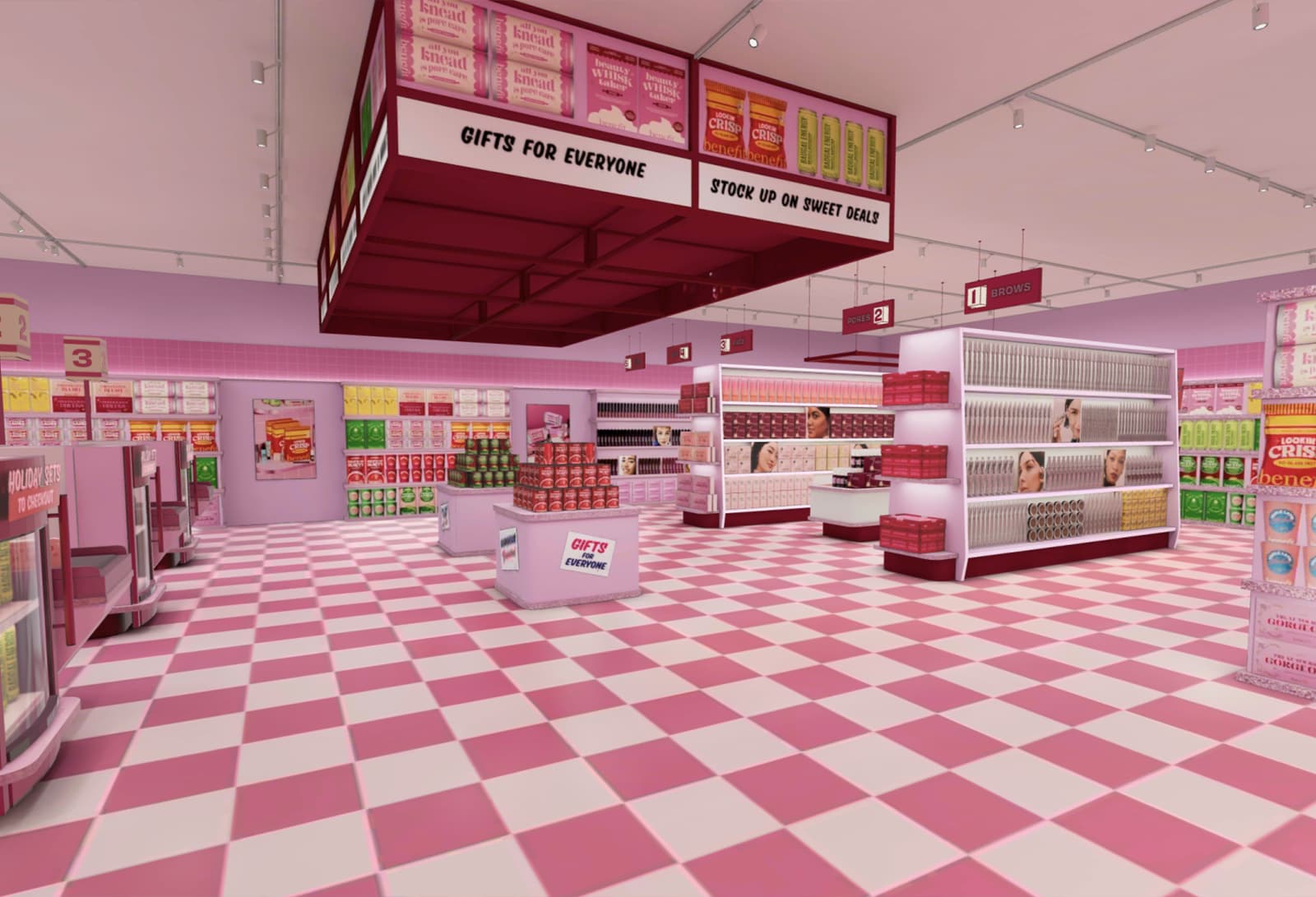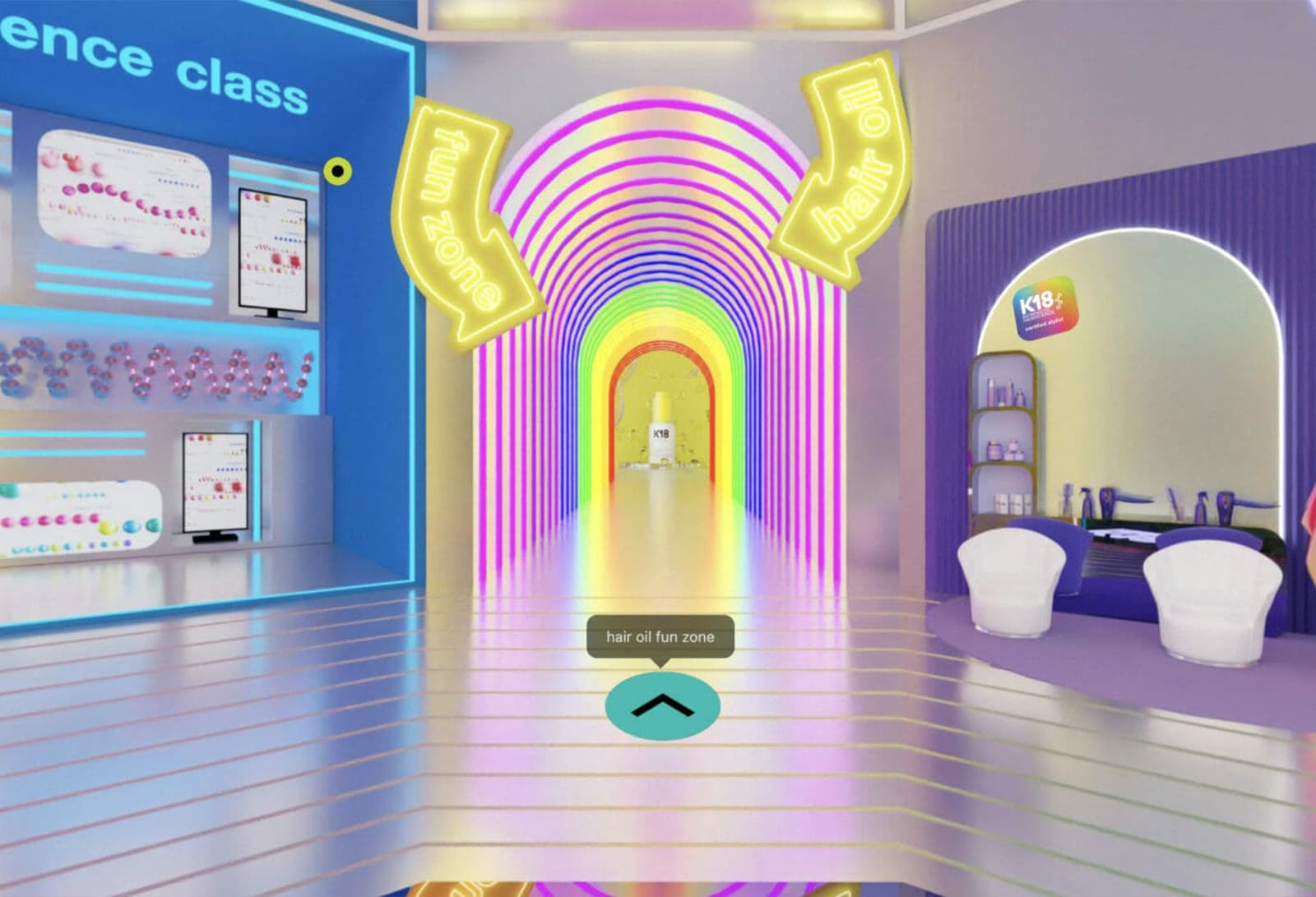The metaverse transformed the way beauty is consumed, creating immersive and exciting experiences for customers in an industry now heavily invested in experiential marketing. In the modern day it’s standard for brands to be involved with platforms such as Roblox as beauty’s next generation (Gen A) continuously seek out game-based, digital brand interactions. Casting the mind back to the early 2020s, it seemed like almost every beauty brand was tapping into the space, with events such as Metaverse Beauty Week rising in popularity, as a new brand announced an activation almost daily. In 2022, Coresight Research reported an estimated $1 billion was spent on the metaverse across all product categories, with this figure predicted to double in size every year until 2027.
Today, the metaverse is still going strong, however it seems to be moving at a slower, steadier pace than when the hysteria initially began several years ago—separating those jumping on a trend from those committed to longevity in space. Recently, some brands that were once heavily invested in the digital realm have taken a step back. A notable example is Shiseido—who went into the metaverse by working with world-building platform Decentraland in 2022, followed by the creation of NFT’s for various brands in its portfolio including NARS.
In December 2024, a source employed by the Shiseido told Glossythat the company had shut down its metaverse and web3 project under its technology and platforms division. The move was made to “reinforce [individual] brand foundations” and “rebuild the company to profitability, as well as enhance operational governance,” with an intention to instead concentrate on areas where it “holds a competitive advantage.” The goal behind the closure was to encourage company savings, aiming for $148.1 million in global cost reductions by the end of 2025.
But what’s next for the metaverse and those that want to play the long game in the space? Over the past six months, many beauty brands have redirected their focus towards standalone virtual retail campaigns, separate from popular metaverse platforms, focusing on selling through the metaverse, which aside from Roblox recent e-commerce efforts, has not commonly been seen across the category. The frontier bridges the gap between physical and digital retail, allowing customers to interact with 3D environments that offer an immediate and tangible experience and represent the next stage of digital innovation in beauty—blending convenience and engagement in a futuristic and practical way.
Annie Siara, founder and CEO of immersive-commerce solution provider ONEWAYX, believes that 3D virtual stores will be the next big thing in beauty. “In the next two to five years, virtual retail experiences will become standard offerings across the retail landscape, and I expect they will be integral components of omnichannel retail strategies,” Siara tells BeautyMatter.
From Benefit to e.l.f, Gabar to Givenchy, a plethora of brands have already experimented in the space, and the consumer payoff is apparent. According to recent reports, 61% of consumers say they prefer retailers and brands offering augmented reality (AR) experiences. Additionally, interacting with AR experiences leads to a 94% higher product conversion rate, and virtual stores have a 115% engagement time increase compared to a traditional 2D branded website. On average consumers spend over nine minutes in a virtual retail environment compared to just three minutes on a traditional website.
“Virtual retail has fundamentally transformed the online shopping experience by bridging the gap between the tactile, immersive nature of in-store shopping and the convenience of e-commerce,” Siara continues. “Virtual retail allows brands to create a 3D walkthrough experience in a curated visual presentation—something that static 2D websites simply cannot replicate.”
ONEWAYX created a virtual retail design for Givenchy Beauty, which ran during the 2024 holiday period and launched across eight countries in five different languages. Through a personalized gift finder, shoppers were transported to the Givenchy Mansion at 3 Avenue George V, Paris, where the story of founder Hubert de Givenchy was woven into the experience. Throughout the activation, consumers received tailored product recommendations by answering questions about who they were shopping for and were able to make these purchases on the site.
Another notable example of ONEWAYX’s beauty ventures is a collaboration with niche fragrance brand Gabar, in which a virtual world in a desert landscape was created, bringing together human-made and natural elements to virtually tell the brand's story. Since the launch, Gabar has seen an increase in engagement on social media channels by +161%, and consumer time spent interacting with the brand has gone up by 115%.
“Virtual retail revolutionizes the industry by providing a unified, immersive, and personalized shopping journey. It integrates multiple interactive experiences within a single virtual platform, creating seamless consumer touchpoints,” Siara continues. “Whether exploring product categories, virtually trying on makeup, using a shade finder, or accessing live customer support, virtual retail eliminates the need for excessive clicks or navigating away from the brand's core experience.”
3D virtual store provider Obsess worked with Benefit Cosmetics to create an interactive version of its Benemart supermarket pop-up. The online activation perfectly encapsulated Benefit’s aesthetic, with hot pink shelves stacked high with virtual SKUs. Shoppers were able to add Benefit's collectible sets packed full of bestsellers to their digital cart, virtually try on their favorite products, shop with friends, and play games with a chance to win discounts at checkout.
“This immersive shopping adventure blended our unique brand storytelling with the unforgettable, grocery-inspired world that only Benefit can offer. Making people feel good and having fun is part of our DNA, so leading with entertainment to bring our holiday collection to life was a no-brainer,” Toto Haba, SVP Global Omnichannel Marketing at Benefit told BeautyMatter.


Benefit and Obsess created the virtual store to capture the attention of Gen Z. “We know that a majority of Gen Z and younger shoppers consider gaming as ‘the new social,’ which is why it’s so imperative that brands like Benefit tap into commerce initiatives that essentially turn the traditional website into a full-on branded video game,” said Neha Singh, founder and CEO at Obsess. “The virtual experience mimics a video game, which we know is something that will resonate with young digital shoppers.”
Haba explained that Benemart had a rich outcome in terms of ROI, in a way that physical stores do not. “A significant advantage of our virtual shopping experience lies in its ability to capture interaction analytics. This provides invaluable insights into online customer behavior,” he noted. “By observing which games users engage with most within the Benemart experience and pinpointing the products that attract the highest click-through rates, we gained a deep understanding of their online preferences. Our partnership with Obsess enabled us to visualize this data through heat maps on the Benemart site.”
The power and value of virtual store solution providers such as ONEWAYX and Obsess is becoming increasingly recognized. Just recently, AR start-up Infinite Reality, entered a definitive agreement to acquire Obsess, following a $3 billion fundraising effort at the start of January. The acquisition is the businesses first since the capital infusion. “As a part of Infinite Reality, we are doubling down on our mission to supercharge consumer engagement with immersive brand storytelling,” added Singh.
“Obsess’s stellar track record of building successful 3D virtual stores for major brands is a testament to the incredible opportunity ahead,” said John Acunto, co-founder and CEO of Infinite Reality. “Neha and her brilliant team share our vision to upgrade the ancient 2D web grid to improve ecommerce KPIs for our clients and delight their customers with more engaging, dynamic, and personalized experiences.”
Alongside brands, retailers are also tapping into the immersive-commerce category. Last year, Walmart introduced the Walmart Realm created with Emperia, a shopping experience that allows consumers to browse virtual environments and make purchases based on what they find. The 3D store features three digital environments, created in partnership with influencers Mai Pham, Nava Rose, and more. These included Y’allternative, Go Chromatic, and So Jelly—western, metallic, and sea-themed environments where shoppers can buy home, fashion, and beauty products. Beauty SKUs such as e.l.f lip products float around the space, allowing visitors to learn more about SKUs while playing games to win online discounts.
“Walmart Realm is continuing to shorten the distance between inspiration and commerce for the next generation of customers, highlighting the best gifts for everyone on their list in a familiar, gamified experience. It’s fun. It’s immersive. It’s adaptive retail,” says Justin Breton, Head of Brand Marketing Innovation at Walmart.
Olga Dogadkina, CEO of Emperia, highlights that the key to success within these virtual platforms is to introduce customers to something they haven’t seen before. “Surreal environments are something we highly recommend brands doing, especially when we’re looking at younger audiences,” Dogadkina says. “The main reason for that is, when we think about omnichannel strategy, everyone knows what Walmart looks like—but you don’t want the same type of experience online. It’s much more about continuation of the brand vision.”
Siara reiterates the strength of omnichannel strategies within immersive commerce, stating that brands should approach these activations like social media. “Just as you would not focus solely on Instagram and ignore TikTok, the same applies to virtual experiences. Maintaining a consistent brand experience across various platforms, including third-party platforms like Roblox, retail channels, and owned channels, is crucial,” Siara tells BeautyMatter. “If a consumer enjoys an engaging, fun, and immersive experience on Roblox but lands on a brand's website only to encounter a 2D interface, they could quickly lose interest. The consistency of the experience is key to keeping them engaged and loyal to the brand.”
In today’s crowded digital landscape, consumers face an overwhelming number of brand and product choices, and now more than ever, differentiation is key. While traditional retail websites rely solely on design, branding, and user interface to stand out, virtual retail allows brands to engage consumers on a deeper level. “By enabling shoppers to "step into" a virtual retail store, brands can evoke emotions through storytelling, and a sense of connection that enhances the overall consumer experience. It is about creating an experience that feels personal, immersive, and memorable,” concludes Siara.

Want to continue reading this article and others just like it?
Subscribe to BeautyMatter and access the most current beauty intelligence and news updates.
SubscribeAlready a member, login here.